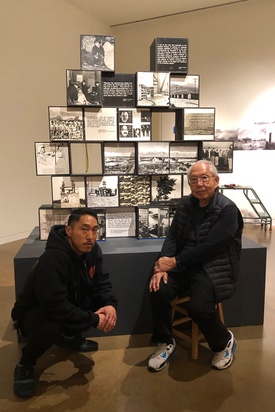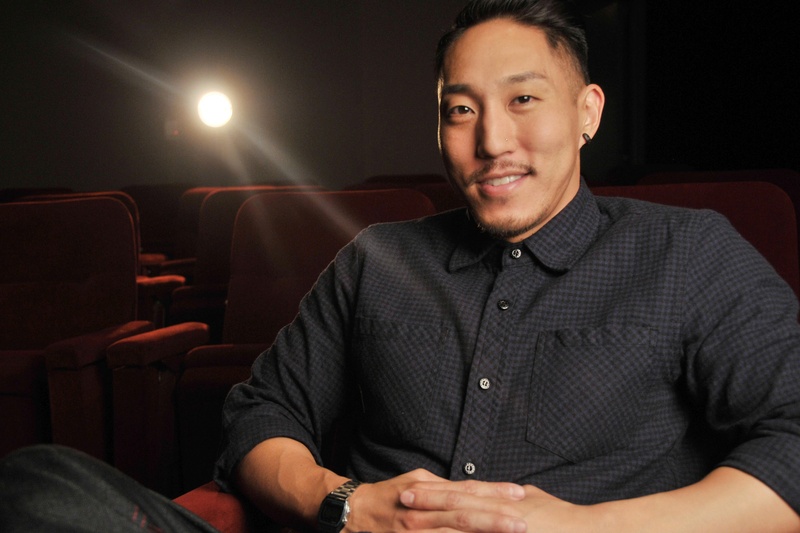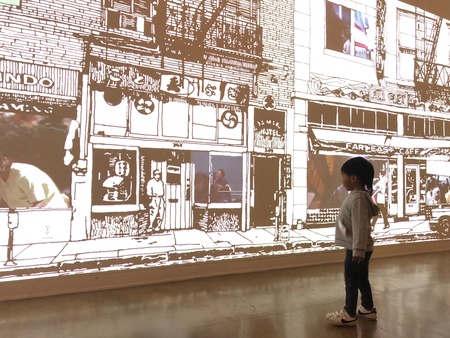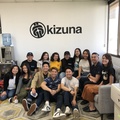Los Angeles’s Japanese American community has always been ‘home’ to filmmaker, Tad Nakamura. Growing up in West LA and playing basketball with other Japanese American children is where Tad felt that he truly had a sense of belonging. Being involved with the Japanese American community from a young age, all of Tad’s major life decisions were in part influenced by his upbringing in the Japanese American community, his education background, and his parents, Robert Nakamura and Karen Ishizuka.
Tad claims that the Japanese American community, “... provides me with an identity, a place in the world, a sense of history, responsibility, accountability, a lens to see the world through, a sense of belonging.” The understanding and appreciation of LA’s JA community was developed as Tad developed into adulthood; that understanding and appreciation helped guide him to a career in filmmaking for social and historical matters.
Another aspect of Tad’s life that sparked his career in filmmaking was his Asian American Studies bachelor’s program at UCLA; this allowed him to become involved with the EthnoCommunications program which was when he truly realized filmmaking can be used as a tool for both teaching and organizing.
After earning his bachelor’s degree, Tad earned his masters in Social Documentation at UC Santa Cruz. With the sense of community and filmmaking being used as a tool came Tad’s urge to create films to help better serve the larger AAPI community.
Now being a father himself, Tad hopes to pass on the culture, traditions, and values of the Japanese American community that he has learned to appreciate onto his son. Tad’s inspiration for filmmaking stems from a multitude of factors such as the AAPI communities, UCLA’s EthnoCommunications program, Visual Communications, but above all his parents.

The biggest influences on Tad’s career choice were his parents Robert and Karen. Karen Ishizuka is an established writer and filmmaker. Robert Nakamura is one of the co-founders of Visual Communications (VC). Visual Communications was established in the late 1970 as a way to preserve and remember Asian American history.
Tad thanks his parents influence, being filmmakers themselves, for allowing him to even consider becoming a filmmaker in the first place. The founding members of VC were the pioneers for Asian Pacific American video, film, and media; their goal was to be a learning tool and archive for Asian American lives in the U.S. during the time of the Asian American and Anti-War movements.
The impact that VC has had on the Nikkei and broader Asian American community during the past 50 years are being able to document the diversity of the AAPI community. In the beginning of VC, the projects were to mainly copy and archive historical photos and collections of family documents.
Currently, VC is a provider of visual history that in Tad’s words, “informs us of who we are today, what we’ve been through, and what needs to be carried on.” Not only has VC been a great source of information of history, but also a major platform for Asian American artists and filmmakers. Specifically for Asian American filmmakers the platform that VC has provided is the Los angeles Asian Pacific Film Festival that allows them to showcase their work.
A unique part of the Japanese American National Museum’s (JANM) At First Light: The Dawning of Asian Pacific America exhibit is Tad Nakamura’s video installation, FSN 1972, which features clips of life in LA’s JA community during the 70’s within an animated illustration of First Street North. Within Alan Ohashi’s First Street North illustration, Visual Communications’s video and audio archives play inside the windows and doorways of the still image. The illustration of First Street North was done around the same time as the beginning of Visual Communications, and seemed appropriate to use as the frame for the video and audio clips since the JANM is on the corner of Alameda and First Street North, according to Tad.
Reading a brief description about FSN 1972 cannot do the video installation justice of the sense of pride and understanding a Japanese American, or truly anyone, can get from viewing it in person. When viewing FSN 1972 one truly does feel as though they are taken back to the 70’s and 80’s and experiencing both daily and significant life events as a Japanese/Asian American.
Being able to contribute to the legacy of these VC filmmakers and illustrators is what Tad aimed to do with this inspiring piece of art. The definition of good art in Tad’s opinion is to, “ … not only gives us a sense of history and purpose but it can also provide a vision of what a better future can look, sound and feel like.”
Tad wanted to be able to pay tribute to the Asian American community organizers and artists that came before him through all the films and work he does because of the benefits he has gained through their efforts. Some of the efforts that pioneering Asian American community organizers and artists that, “fought for and built a foundation of opportunities, spaces, and institutions that we all stand on today.” His efforts with the video installations was to produce good art just as his parents and the rest of the Visual Communications crew were able to do.
The focus Tad has on his career is not simply to build his own legacy, but to continue his parents and VC’s and promote a better tomorrow for the current and next generation’s Asian American filmmakers. A challenge that the current and future AAPI filmmakers have is to be able to create good art just as the previous generation(s) did. The good art that Tad references does not just equate to visually pleasing, but art that provides visions and sense of what a better future can be. For aspiring filmmakers Tad’s advice is:
… to just create as much as you can. Don’t worry about if it’s any good or having the right equipment. The only way to becoming a better filmmaker is to make films. I started off making slide shows of me and my friends and filming family birthday parties. Those types of small projects are fun, inexpensive, and require the same fundamentals that you need to create a documentary film. My dad always says that measure of success for your work should be how useful it is to others. For community artists that are just starting out I would focus more on being useful than being different or unique. If you have already found your voice as an artist, that’s great. If not, use your art/craft/resources/position to amplify the voices of those who inspire you.
Doing meaningful works of art for the AAPI community during his career is how Tad Nakamura continues to build and inspire the next generation of film and media makers.
* * * * *
At First Light: The Dawning of Asian Pacific America is on view at the Japanese American National Museum from May 25, 2019 to October 20, 2019.
*This is one of the projects completed by The Nikkei Community Internship (NCI) Program intern each summer, which the Japanese American Bar Association and the Japanese American National Museum have co-hosted.
© 2019 Kayla Tanaka






